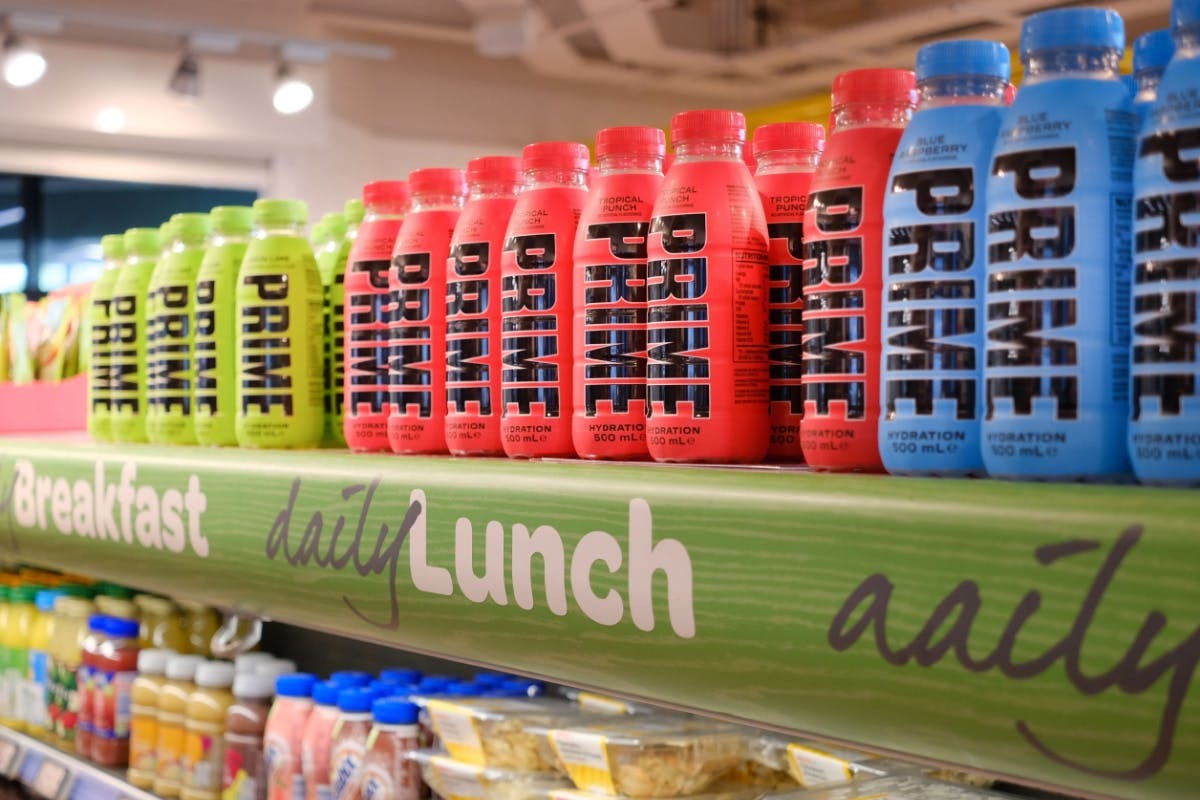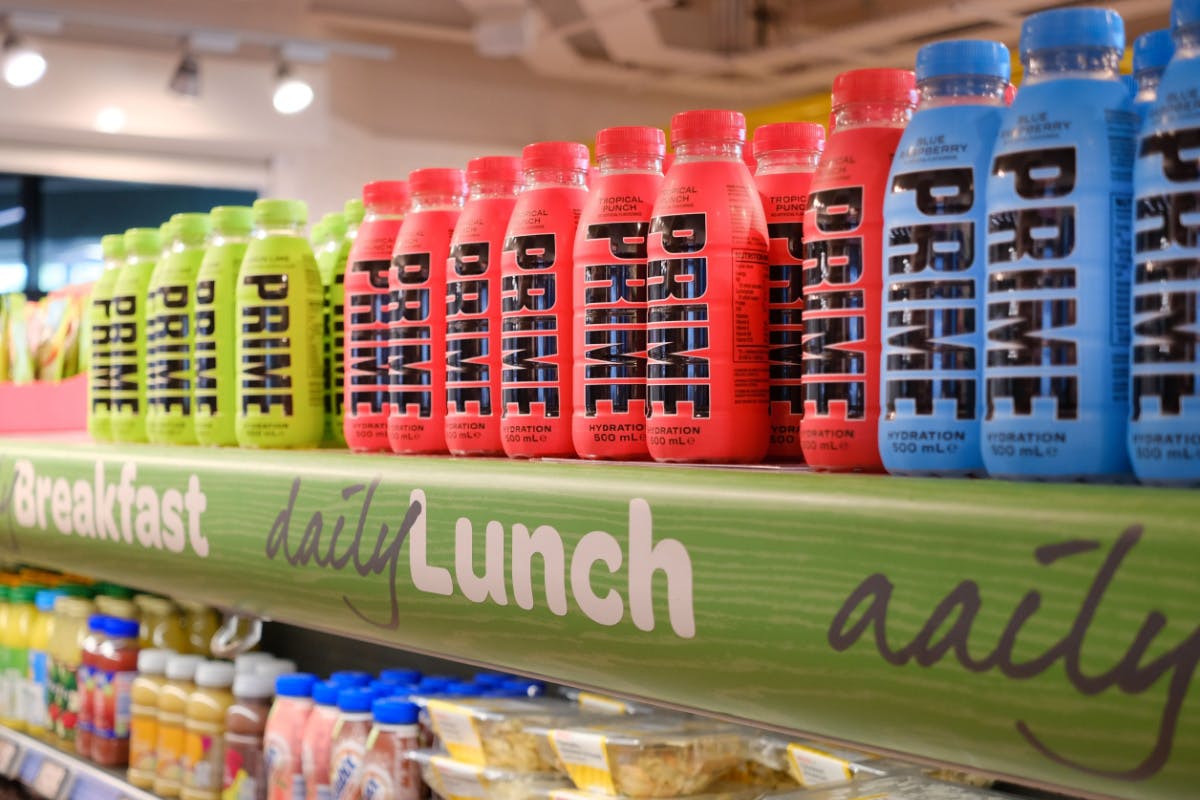 While the energy drink category is very established, the way Prime, led by Logan Paul and KSI, built its brand is fairly novel, says Paul Bailey, brand strategy director at agency Halo.
While the energy drink category is very established, the way Prime, led by Logan Paul and KSI, built its brand is fairly novel, says Paul Bailey, brand strategy director at agency Halo.
“Traditionally, businesses design the product, then find an audience for the product, and then sell the product,” he says, “Basically, what these kinds of new creators are doing is building an audience and building a brand for themselves, and then they’re just deciding, what products can we sell through this?”
He predicts that this new kind of brand building, done by influencers, will only gain in popularity, citing MrBeast’s Burgers, a fast-food delivery model, created by the YouTuber MrBeast. Brands like this are likely to follow a similar cycle in gaining immense popularity before “dying again very quickly.”
“For the likes of Logan Paul and KSI, the brand that matters is their own brand, they’re not really going to be damaged by Prime not selling anymore. They’ve made a fortune out of it,” he says, adding the influencers will likely just “move onto the next thing”.
While the rise (and fall) of brands like Prime might seem almost meteoric to onlookers, Bailey says it’s important to remember these influencers have been building up their own brands for years and even decades, allowing them to launch off that.
Steady wins the race
The way that Prime has performed as a brand is novel, in that it has been built on TikTok and other digital platforms, but, speaking to Marketing Week Jon Evans, chief customer officer of System1 and host of the Uncensored CMO podcast, says that it follows an “exaggerated” version of a trend that has occurred many times before.
Evans spent many years working in FMCG, and specifically soft drink marketing, working at Lucozade and Britvic.
He cites research he did while at Britvic, which looked at the 20 most successful soft drink launches of the last decade. That research found that more than half of those launches saw their sales decline in the second year after launch.
“What seems to happen is you get this big level of interest in new products, particularly from supermarkets where they want to stock the new thing. Then what happens is they basically launch too early so there’s no awareness yet, they haven’t built up a consumer base yet,” Evans says.
New product launches fail because they aren’t given the time to grow
“The rate of sale tends to be quite low, and then a year later, the next new thing comes out and it replaces the thing that was there.”
Social media has just acted as an accelerant to that trend in the case of Prime, he argues, meaning the drop off as reported in NIQ figures is just a more exaggerated version of that.
He contrasts that bell-curve-like model of growth (of sharp growth in year one followed by decline) with the approach that Red Bull took at launch.
“What they did is they started in a small part of the market first, they proved the concept,” Evans says. “And then they expanded gradually over time into new channels and to a bigger audience. But they did it in a very controlled way, and they also committed to it over a long period of time. They didn’t just do a big launch and then move on to the next thing.”
Being in it for the long term
The distribution strategy of Prime drove the price up for the drink, as its lack of availability meant many were prepared to pay a premium to get their hands on the drink, says Bailey.
“It was almost like a weird luxury good for kids,” he says. “Luxury brands, their pricing strategy and their distribution strategy is to make it really hard to get and make it really expensive, and [Prime] almost followed that model.”
However, unless the product lives up to its pricing, driving repeat purchase is extremely difficult, he notes. Therefore, established brands shouldn’t be worried about the likes of Prime in the medium to long term, he says.
Brands seeing a decline in sales in year two doesn’t necessarily equate to terminal decline, says Evans, but it will take “a lot of money and a lot of patience” to make it work.
He points to the example of Coke Zero which saw sales decline in year two after a massive launch. After a lot of effort, investment and consistency, the Coca-Cola Company did manage to firmly establish the brand.
For Prime and its owner KSI and Logan Paul, Evans comments: “I’m not sure they’ve got the appetite to spend the money to recover the position they’re in.”
For marketers looking to take a cautionary tale from Prime’s decline, Evans says to “beware the fad”.
Marketers taking a lesson from this should look to double-down on “the fundamentals” of “availability, building brand awareness, being priced right and having a good proposition”.
“You can’t cheat the fundamentals. You can cheat maybe for a short time as they have, but long term, you can’t cheat the fundamentals,” Evans says.
Lire l’article complet sur : www.marketingweek.com



Leave A Comment